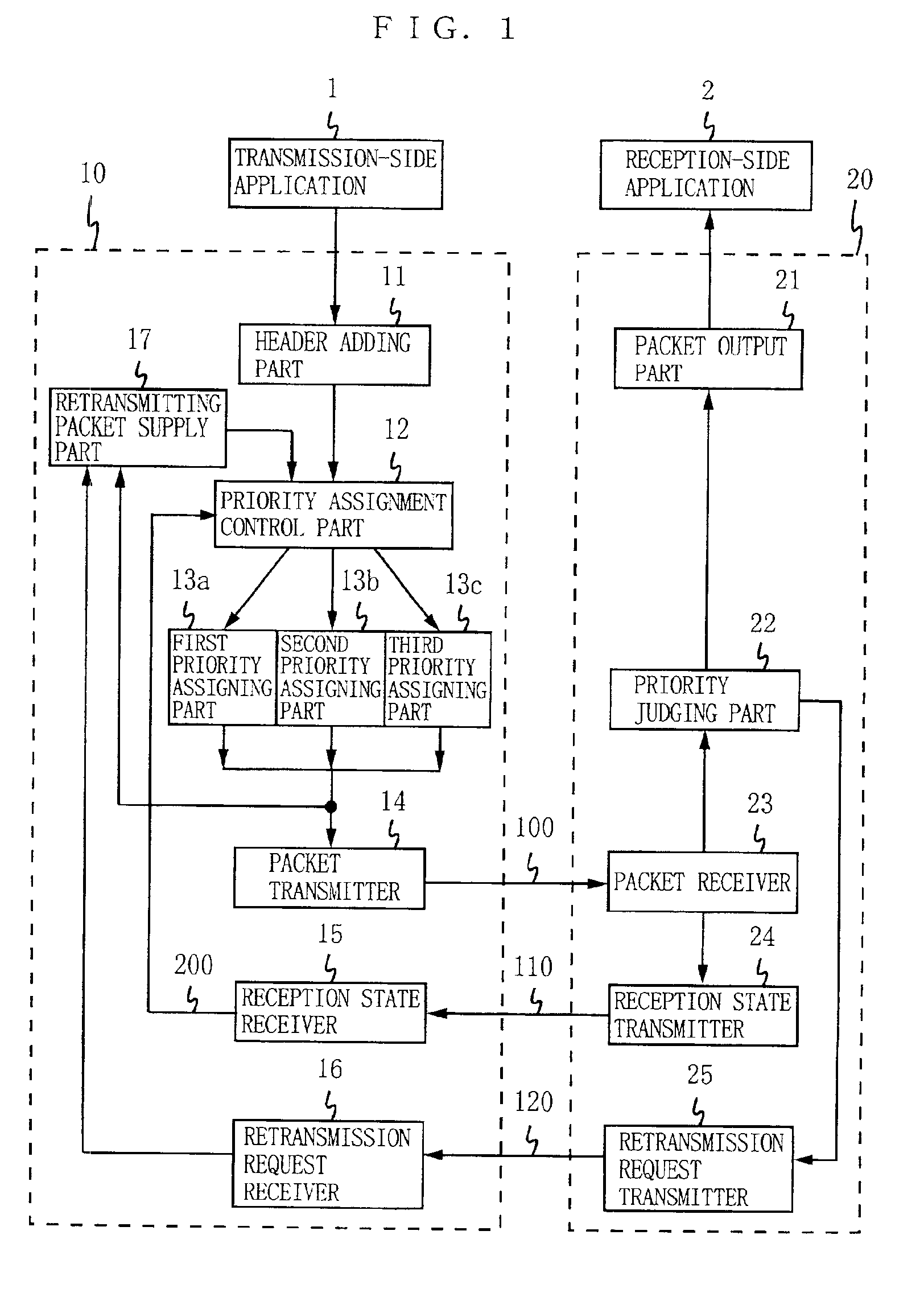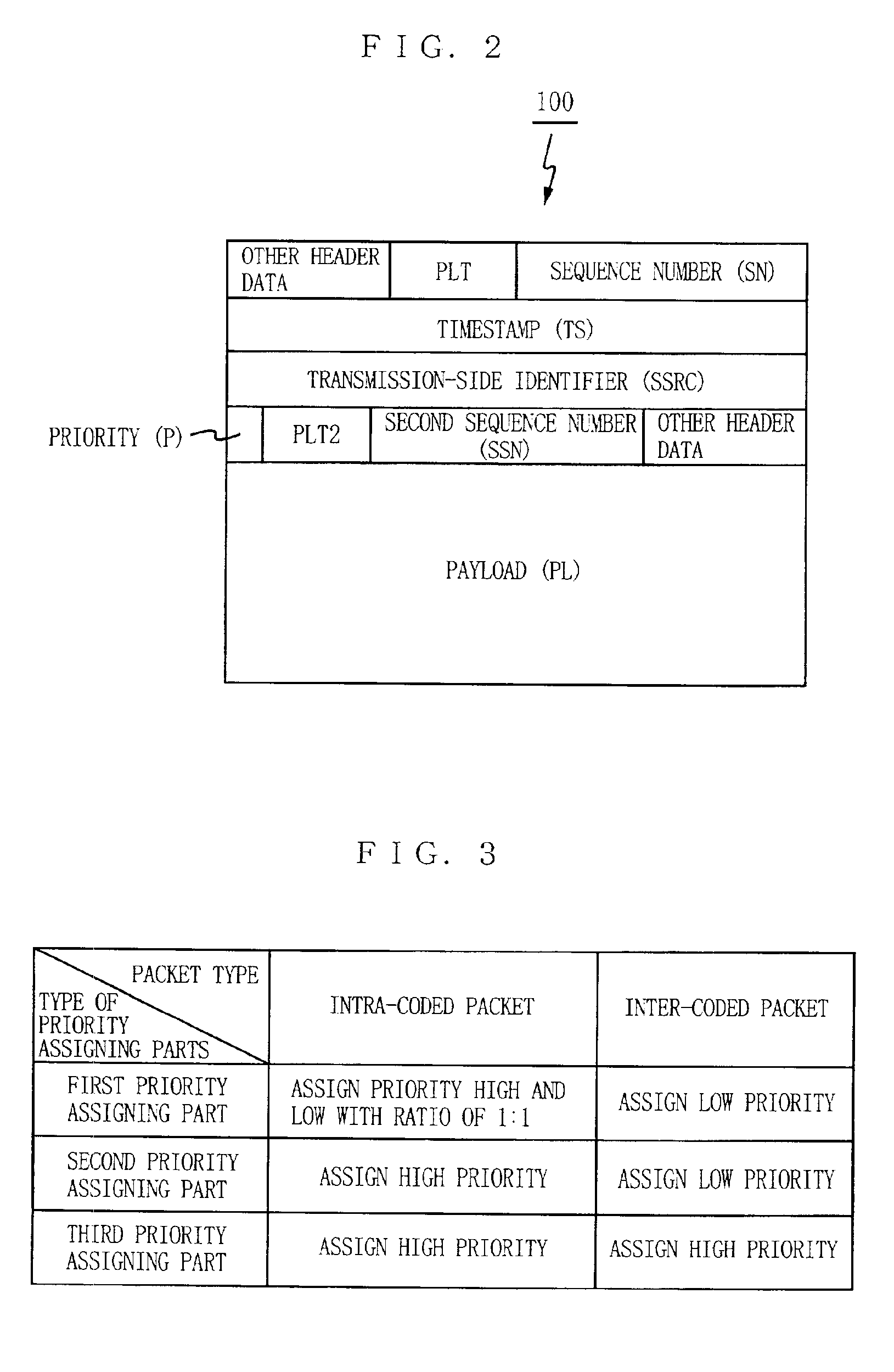Transmission apparatus and method for changing data packets priority assignment depending on the reception feedback
a data transmission and priority assignment technology, applied in data switching networks, instruments, frequency-division multiplexes, etc., can solve problems such as inability to efficiently carry out data transmission with whatever available transmission capacity, increase in data for transmission, and likely loss of packets, so as to prevent quality deterioration
- Summary
- Abstract
- Description
- Claims
- Application Information
AI Technical Summary
Benefits of technology
Problems solved by technology
Method used
Image
Examples
Embodiment Construction
[0042]FIG. 1 is a block diagram showing the configuration of a data transmission apparatus according to an embodiment of the present invention. This data transmission apparatus is configured by a data transmitter 10 and a data receiver 20, and data is transmitted from the transmission-side application 1 to the reception-side application 2 under the priority-assigned RTP. The data transmitter 10 includes a header adding part 11, a priority assignment control part 12, first to third priority assigning parts 13a to 13c, a packet transmitter 14, a reception state receiver 15, a retransmission request receiver 16, and a retransmitting packet supply part 17. As to the data receiver 20, included are a packet output part 21, a priority judging part 22, a packet receiver 23, a packet reception state transmitter 24, and a retransmission request transmitter 25. Herein, any component appeared in the apparatus of FIG. 9 is under the same reference numeral.
[0043]Described next is data transmissio...
PUM
 Login to View More
Login to View More Abstract
Description
Claims
Application Information
 Login to View More
Login to View More - R&D
- Intellectual Property
- Life Sciences
- Materials
- Tech Scout
- Unparalleled Data Quality
- Higher Quality Content
- 60% Fewer Hallucinations
Browse by: Latest US Patents, China's latest patents, Technical Efficacy Thesaurus, Application Domain, Technology Topic, Popular Technical Reports.
© 2025 PatSnap. All rights reserved.Legal|Privacy policy|Modern Slavery Act Transparency Statement|Sitemap|About US| Contact US: help@patsnap.com



